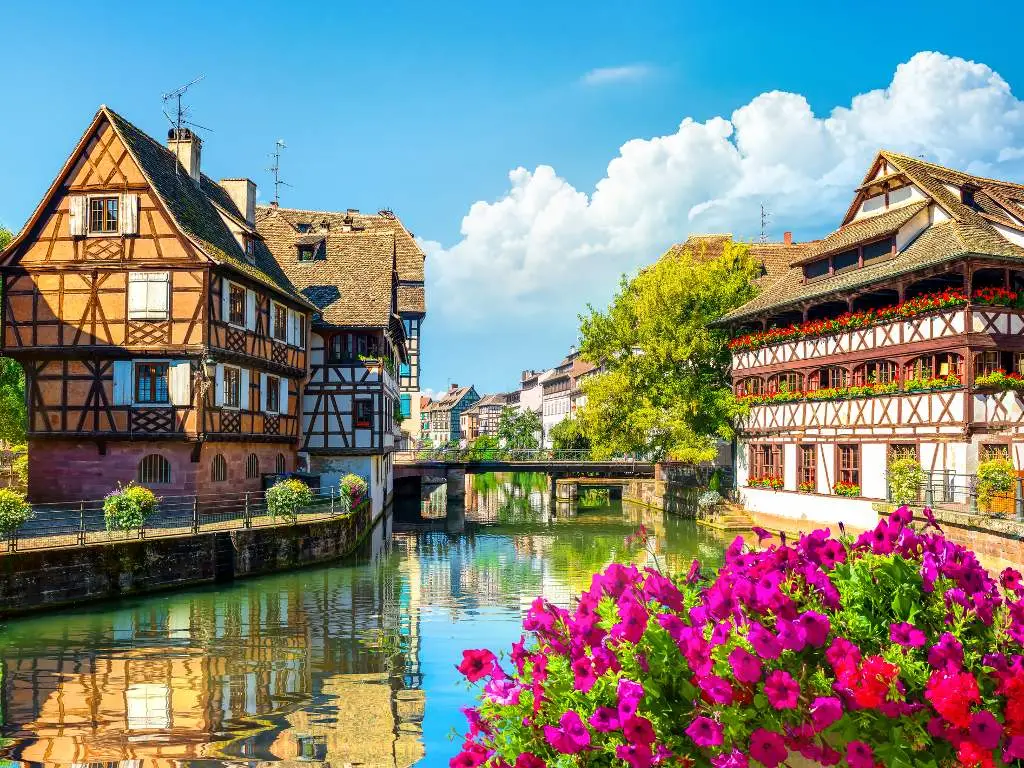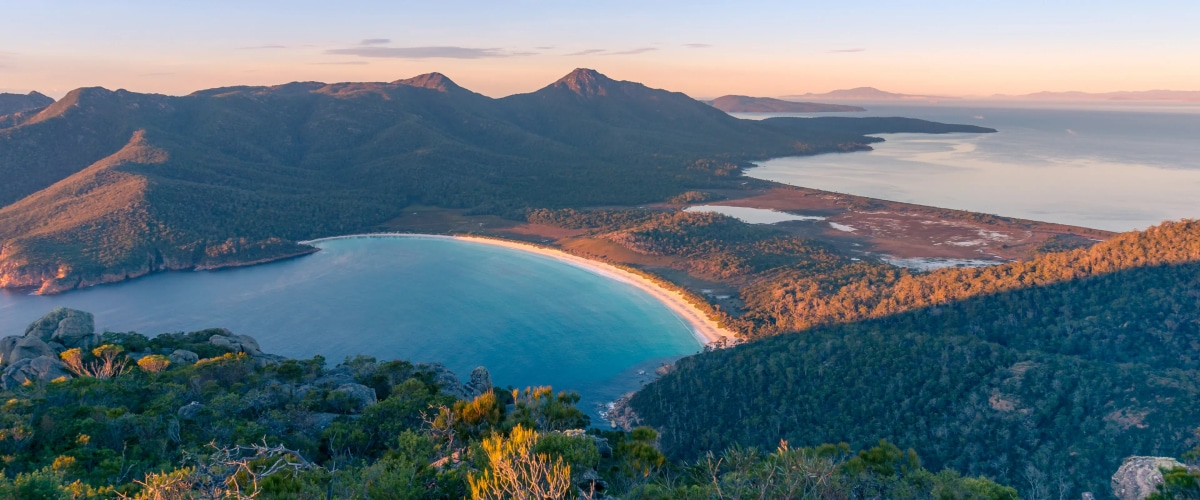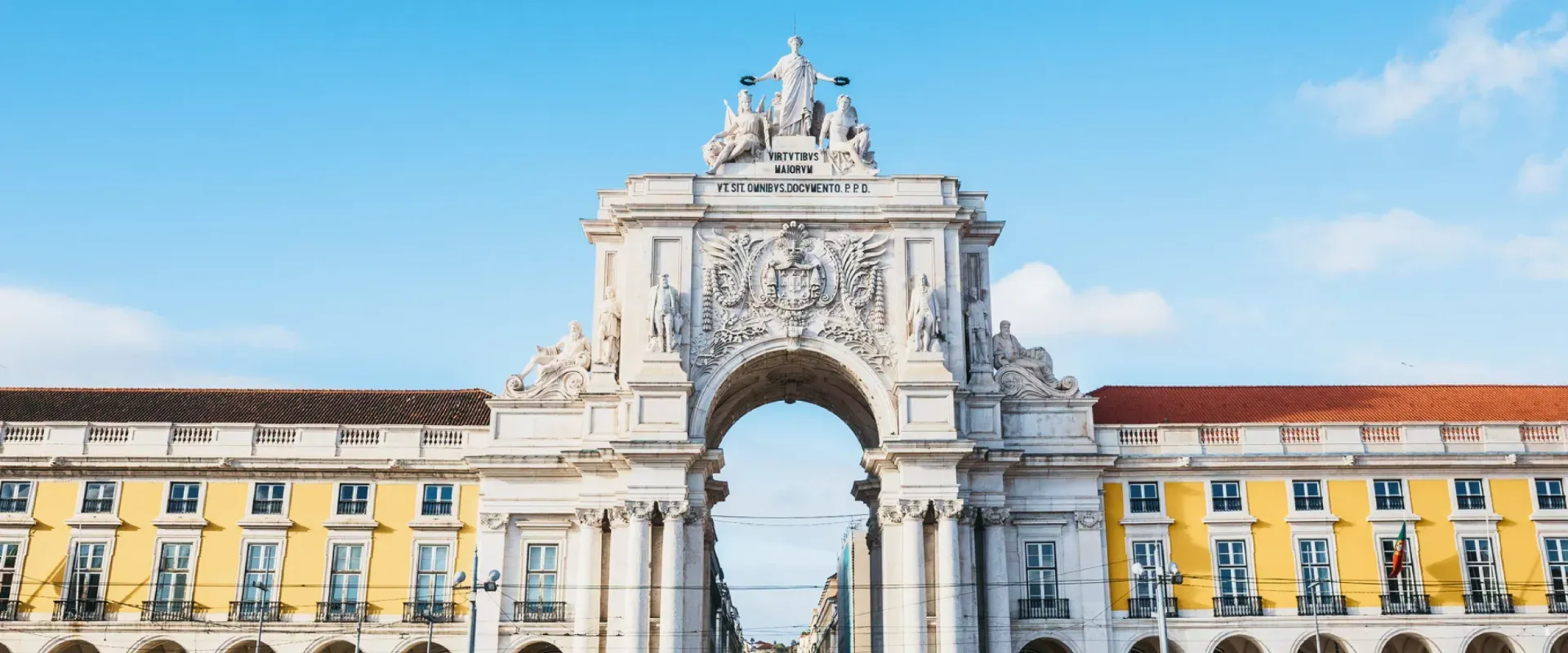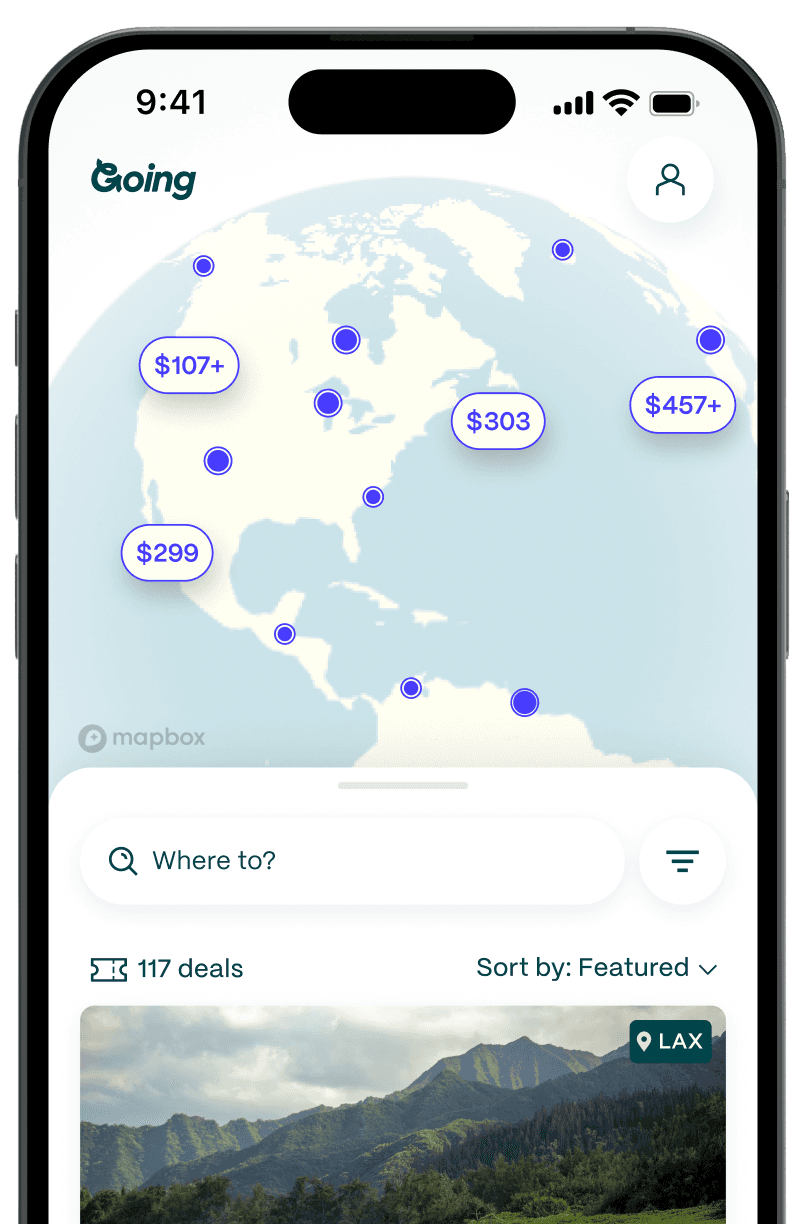
Guyana: The South American Country With Some of the World's Biggest Creatures
Table of Contents
Set on the north coast of South America, tucked between Venezuela, Suriname, Brazil, and the Atlantic Ocean, tiny Guyana (population 800,000) is one of the least densely populated countries on Earth. The country only gets around 400,000 visitors per year, most of those Guyanese returning for family visits, but with 90% of its territory covered in outrageously biodiverse jungle, it is rightfully becoming a more popular tourist destination in recent years, thanks to its truly eco-oriented and community-based tourism initiatives.
The coastline feels Caribbean, while the interior is heavily forested and home mostly to Amerindians, making it feel like you get two countries for the price of one. Travel is still rugged here, and transportation complicated, but it’s worth the effort to track caiman with scientists at night, paddle a river in a traditional Makushi canoe, or hear the thunder of a gargantuan waterfall with no one else around for hundreds of miles. Oh, and Guyana is the only English-speaking country in South America, so communicating is a breeze.
Big changes may be coming, though. Until very recently, Guyana was one of Earth’s poorest countries. Gold mining, both legal and illegal, made the economy gain a bit of momentum in the early 2000s. Now it is on track to become the fourth-largest oil producer in the world, ahead of the USA and Qatar, a windfall that could be a blessing or a curse in a country with little infrastructure to manage this amount of wealth so quickly.
"Land of the Giants"

You can’t talk about Guyana without getting superlative about its flora and fauna—some of which are among the biggest of their species. The country is home to an impressive array of animals, including the country’s national animal, the jaguar (you might see one crossing the road near Surama Village). There are also giant anteaters (search for them while riding horseback in the Rupununi Savannahs) and harpy eagles, which are among the largest eagles in the world (trek to the Kanuku Mountains for your best chance of seeing one).
Meanwhile, the Victoria Amazonica, the world’s largest water lily, can be found around Rewa and Karanambu Lodges, and you can get way up in the towering Amazon jungle canopy via the Iwokrama Canopy Walkway. The 840 species of birds make birders swoon.
Experience the power of Kaieteur Falls

Located in Kaieteur National Park in the center of Guyana, Kaieteur claims to be the world’s highest single-drop waterfall. Whether that’s true or not, it is a fact that it’s among the most spectacular. Twenty-three thousand four hundred cubic feet of the Potaro River tumbles, per second, in a thick sheet into a rocky bowl 741 feet (more than two football fields) below, sending up clouds of foam, mist, and rainbows.
The power is breathtaking, but the surrounding pristine Amazon rainforest dotted with rare wildlife like tiny golden rocket frogs and the bright red Cock of the Rock bird, is equally spectacular. Just getting here is an adventure; choose from a scenic flight (here’s a video of the stunning views on the approach) in a small aircraft or do the three-day jungle overland trek.
The gritty charms of Georgetown
Georgetown, the country’s capital, changed hands several times between the Dutch, British, and French after its humble beginnings in the late 1700s. Many of the Dutch names you'll see around town reflect this, such as Stabroek, named after Lord Stabroek, once-president of the Dutch West India Company. The British took over in the early 1800s and held on until Guyana's independence in 1966. Now the seat of CARICOM (the Caribbean economic Community), Guyana’s capital is shaking off its reputation as a dodgy backwater to feel more cosmopolitan, particularly with respect to its rocking nightlife and evolving restaurant scene.
During the day, top sights include the Stabroek Market, built in an ornate cast iron structure in 1880 and filled with colorful produce and meat stands, seemingly a million people, and a cacophony of commerce. Massive, wooden St George’s Cathedral is the most noteworthy of the city’s many crumbling, circa late-1880s architectural masterpieces. Overall, the city is a heady mix of languid tropics and Wild West boom town.
Liming below sea level
Speaking of languid, the national pastime in Guyana is “liming,” which means chilling out and doing very little besides maybe sharing food, drink, and a laugh with friends.
You’ll see plenty of folks liming in Georgetown, particularly on the sea wall. This impressive wall, built by the British in the late 1800s, protects the entirety of the city, and a total of 280 miles along the coast, from getting flooded since many of the populous coastal towns sit below sea level. Head to the wall around sunset for a very local experience.
Amerindian adventures
Community-based tourism began in Guyana in the early 2000s and now flourishes, especially in villages of the nine Indigenous Amerindian tribes, most located in deep swathes of the Amazon rainforest. These nine Amerindian tribes, along with descendants of enslaved Africans and once-indentured East Indians, make up the main fabric of Guyana’s fabulously mixed culture, although there are also families from British colonizers, Southeast Asians, and many more.
Stay in Caiman House in Yupukari to track endangered black caiman as part of a long-term research project, head to Surama Village to go birdwatching (here’s a free bird checklist); at Rewa, take a traditional canoe to look for rainbow-hued arapaima, the planet’s largest scaled freshwater fish. The villages work together and can help you organize an itinerary to visit each or all over several days.
Ravishing ranches

Encircled by vast jungle, the Rupununi Savannah is an incredibly biodiverse 5,000-square-mile wetland that is home to myriad bird species, jaguar, anteaters, and more, as well as Amerindian villages and some of the world's biggest cattle ranches. If you’re old enough to remember Mutual of Omaha’s Wild Kingdom and that unforgettable episode where Stan Brock and Marlin Perkins wrestle a giant anaconda— that happened here, at Dadanawa Ranch, where you can now stay and live like a vaquero, or cowboy.
For more comforts, head to Waikin or Wichabai ranches near Lethem, or Karanambu Ranch, which was once home to the environmental icon Diane McTurk who devoted much of her life to saving the giant river otters in these rivers. Book for early April to catch the biggest event of the year, the wild and culture-filled Rupununi Rodeo. Thousands show up from Guyana and neighboring Brazil for this Easter weekend event that includes wild bull or horse riding, horse racing, and a Miss Rupununi Rodeo Beauty Pageant. It's a huge, festival-like party as much as anything where vaquero culture reigns.
Riding the rivers
One of Guyana’s nicknames is “Land of Many Waters,” and its national anthem is titled “Dear Guyana of Rivers and Plains.” The country has a boggling amount of rivers that wind through mountains, jungle, and grassland, providing boat transportation routes as well as habitat for a vast number of species. The four largest rivers are the Courantyne, Berbice, Demerara, and Essequibo, which all flow into the Atlantic. The Rupununi River meanders through the Rupununi Savannahs and gives that region its name.
Traveling in Guyana means crossing rivers, paddling down rivers, staying at river lodges, looking for river wildlife, and taking cool dips. Aside from the community-run jungle lodges, there are also family-friendly, more upscale places like Atta Rainforest Lodge at Iwokrama and Baganara Island Resort on the Essequibo River near the coast that offer packages, comfortable lodgings, and activities from boat trips to birding and fishing.
Fantastically flavorful food and drink

Guyana’s cuisine takes in all the flavors of its melange of African, Amerindian, and Indian cultures for a true flavor adventure. Pepperpot, a spicy meat stew made with cinnamon, clove, thyme, and native wiri wiri peppers, is the country’s national dish and truly exemplifies the country's cultural fusion.
The dish is served almost everywhere, but in Georgetown, you’ll also want to try nourishing cow heel soup, famous fish and chips at Nicky’s, and a fried dough and sauteed saltfish breakfast at Oasis Café. Inland, farine, a couscous-like meal made from cassava, is served at almost every meal with river fish, local game, and cassareep, a black savory (not spicy) sauce that is extracted from the farine-making process. Refreshing locally made Banks beer and lush Demerara rum, and tropical fruits like bananas, mangos, avocados, and pineapples are ubiquitous.
Good to Know
Is Guyana expensive?
Guyana isn’t a cheap place to visit, especially if you head to the interior, which is where most of the interest is. Georgetown hotels have gone up in price since oil began to be drilled off the coastline a few years ago, with a three-star hotel costing around $170 and simple guesthouses running from $60 per night. Meals in a restaurant cost around $8-15, but you could get by more cheaply at takeaway-type places for around $6-10 per meal. It’s transportation in the interior that really adds up since, often, the only means is private 4WD or flying. A round-trip flight from Georgetown to Lethem, for example, costs around $400. It’s possible to get to the interior by minibus (it’s around $75 from Georgetown to Lethem), but you’ll still need to get private transport to/from the lodges and ranches.
Best time to visit Guyana
Guyana has two rainy seasons: from May to late July and again from December to January. Roads in the interior can become impassable, but river travel is possible during these times. September is the sweet spot for weather and wildlife viewing as well as being Indigenous Heritage Month when Amerindian villages hold often-raucous festivals. April is another good weather month, and this is also when the Rupununi Rodeo is held.
What languages are spoken in Guyana?
English is the official language of Guyana.
Guyana with kids
Expect some rough travel and not a lot of amenities, but kids around 6 years old and up will love the jungles and wildlife. Locals adore children, and they will get lots of kind treatment. Malaria is present, there are heaps of biting insects, poisonous snakes, and so on, so be aware of health risks, get all the needed vaccinations, and be prepared.
Guyana public transportation
Buses are good for getting around the coastal towns, but the ones that head into the interior are rough going and not for the faint of heart.
Is Guyana safe?
Guyana ranks #106 in the world in Vision of Humanity’s Global Peace Index. Guyana has had some skirmishes with neighboring Venezuela over oil, but most conflicts are within the country’s own borders. Drugs, illegal gold mining, and more have led to violence, but tourists are not targeted.
Guyana ranks #145 with a score of 24/100 for LGBTQ+ equality, according to Equaldex's LGBT Equality Index. Gay marriage is still not legal in Guyana, and while homosexuality is tolerated, it’s not completely accepted either.
Getting to Guyana
- Main airport: GEO is the main airport
- Average Going price for cheap flights to Guyana: $443 roundtrip
More South American destinations:
Last updated January 9, 2024









